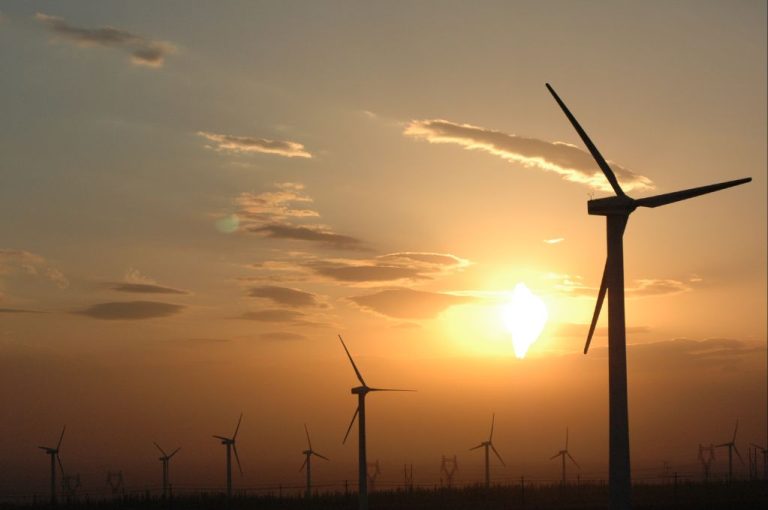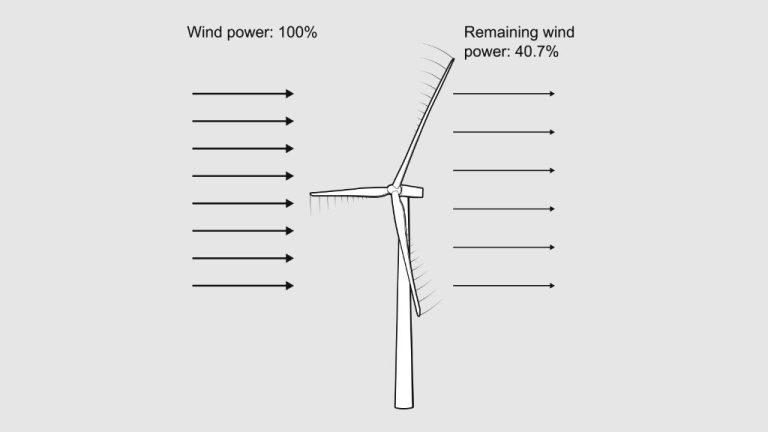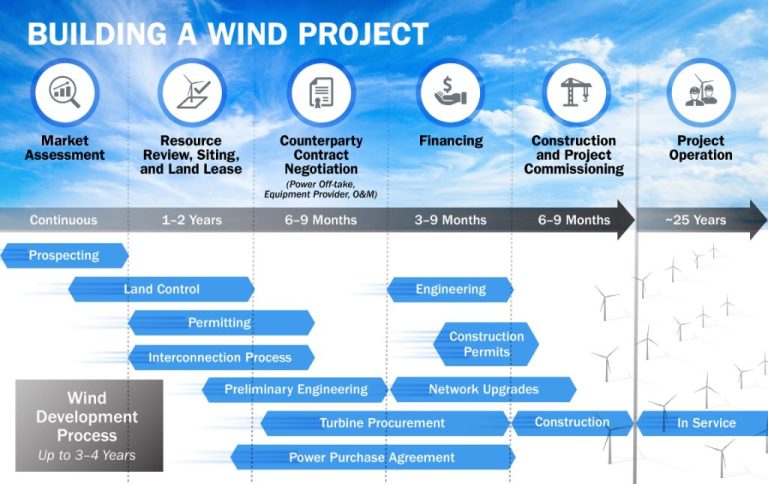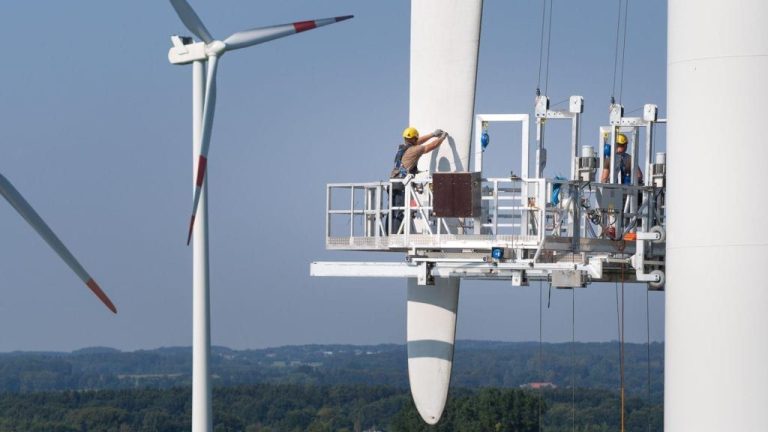Does Wind Energy Produce Waste?
Wind energy is often touted as a clean and renewable source of power. But like any energy technology, wind turbines do produce waste that must be disposed of properly. According to one study, by 2050 the world’s wind industry will be generating over 43 million tons of blade waste every year. That’s a staggering amount that poses unique challenges for waste management and recycling. In this article, we’ll explore the different types of waste produced by wind turbines, examine options for handling the waste, and consider what can be done to make wind energy more sustainable.
Types of Wind Turbine Waste
Wind turbines generate different types of waste during their operation and at the end of their lifespan. This includes both hazardous and non-hazardous waste materials.
One major category is maintenance waste. This consists of oils, lubricants, and greases used in the turbine machinery. These must be changed and replaced periodically as part of routine maintenance procedures. According to NPR, while wind energy generates far less waste than fossil fuels, the maintenance fluids can total thousands of liters over a turbine’s lifetime. Proper disposal is essential to avoid environmental contamination.
Turbine Blade Waste
The blades of modern wind turbines are made of fiberglass reinforced with resin or composites like carbon fiber. According to the University of Edinburgh, wind turbine blades are built to withstand 20-25 years of use, after which they must be decommissioned [1]. Fiberglass composite materials are extremely difficult to recycle due to their complex construction and high strength bonding [2]. As a result, most fiberglass wind turbine blades are currently disposed of in landfills at the end of their lifespan.
Qty of Turbine Waste
Each wind turbine produces an estimated 16 tons of waste over its 20-year lifespan, such as old maintenance parts, https://www.sustainabilitybynumbers.com/p/renewables-waste. The biggest contributor to waste is the turbine blades, which can weigh over 10 tons each. At the end of a turbine’s life, the 3 massive blades need to be replaced, amounting to nearly 30 tons of composite material waste per turbine.
For a mid-size wind farm with around 100 turbines, the amount of total blade waste alone over 20 years can exceed 3,000 tons. With over 60,000 wind turbines installed in the U.S. as of 2020 and installations growing rapidly, turbine waste is becoming a fast-growing waste management issue.
Landfill Challenges
One of the biggest issues with wind turbine waste is that the blades are very large and made of composite materials like fiberglass, carbon fiber, polyester and epoxy resins that resist decomposition. According to a study cited by the Energy5 news site, the average wind turbine blade is 120 to 230 feet long and weighs over 10 tons. Their massive size makes turbine blades extremely challenging and expensive to transport and dispose of in landfills.
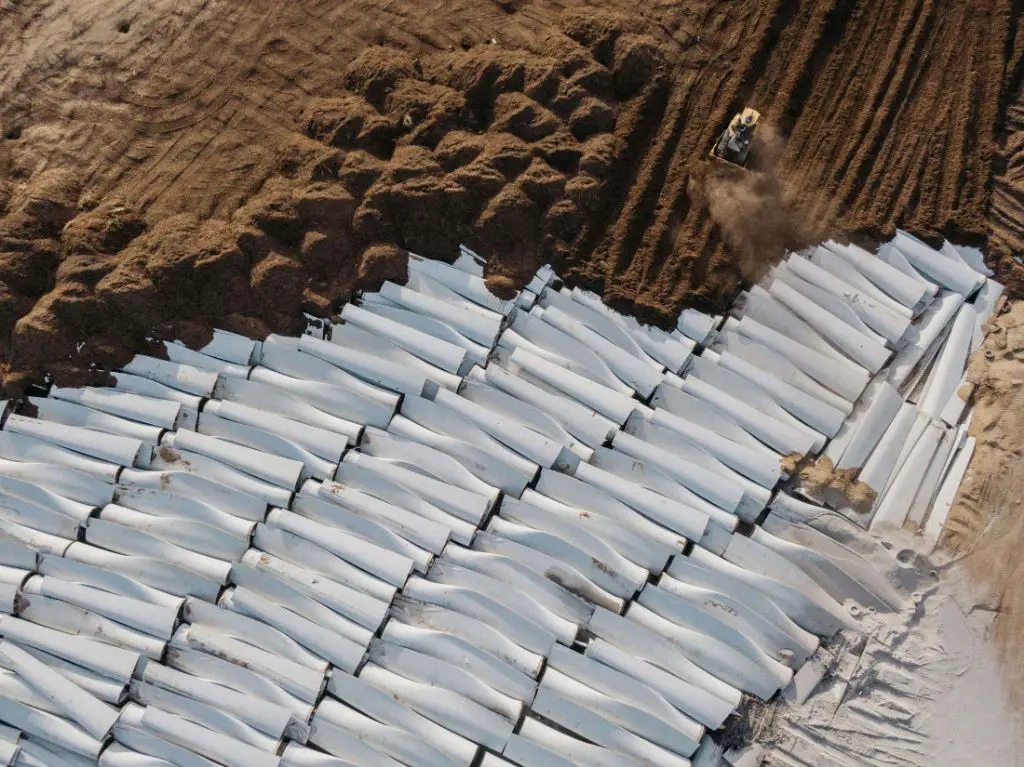
The materials used in the blades are also very difficult to break down. Wind turbine blades can remain intact in landfills for decades or longer before deteriorating. The combination of large size and durable materials causes major headaches when trying to dispose of old turbine blades in landfills.
Recycling Options
There are several options for recycling wind turbine blades at the end of their useful life. Repurposing the blades is one option, where the blades can be reused for other purposes like building materials, furniture, or public art installations. The unique properties of turbine blades, such as strength and durability, make them suitable for various repurposing applications. Source
Thermal and chemical recycling methods are also being explored. Thermal recycling involves burning or pyrolyzing the blades at high temperatures to recover energy. Chemical recycling breaks down the blade material using solvents or chemical reactions. The materials recovered can then be used to manufacture new products. Several companies and research groups are working to scale up and commercialize thermal and chemical recycling processes for wind blades. Source
Waste Reduction Efforts
One approach to reducing wind turbine waste is through design improvements that enable recycling. Manufacturers are exploring blade designs made with fewer composite materials and more recyclable materials like wood and carbon fiber. According to the U.S. Department of Energy, using thermoplastics that can be reheated and remolded, instead of thermosets, can improve recyclability. New designs focus on modular blades that can be taken apart at end of life, rather than shredded. Adhesives are also being developed to allow easier separation of blade materials.
The European Ecobulk project developed a demonstrator blade section using recyclable thermosetting resins and thermoplastic polymer blends. Researchers found thermoset composite materials can achieve properties on par with conventional materials while improving recyclability. The project recommended integrating recycling considerations early in blade design (Clean Energy Wire, 2021). Other efforts like the DEComBlade project are testing chemical recycling processes to recover glass fibers, a valuable material from blades. With careful design choices, wind turbine manufacturers can reduce waste and enable a circular economy.
Source: U.S. Department of Energy
Environmental Impact
While wind energy produces far less waste than fossil fuel sources like coal and natural gas, the manufacturing, construction, and decommissioning of wind turbines does generate some waste that must be properly managed. According to the U.S. Department of Energy, wind turbine waste includes metals like steel and copper, composites like fiberglass, concrete and rebar from foundations, lubricating oils, and plastics.
Compared to a coal plant, wind turbines generate 200 times less waste per unit of electricity generated over their lifetime, according to the Union of Concerned Scientists [1]. The waste generated by coal plants includes large quantities of toxic ash and sludge that contains heavy metals like mercury, arsenic, and chromium. Coal plant waste is also much more difficult to recycle and reuse.
Natural gas plants produce negligible amounts of solid waste compared to coal and wind. However, natural gas extraction, transportation, and combustion produce emissions of carbon dioxide, methane, and other pollutants that contribute significantly to climate change and air pollution. The environmental impacts of natural gas waste are more dispersed than the solid waste of coal and wind plants.
Overall, while wind turbines do create waste from decommissioned equipment and materials, the amount is small compared to fossil fuel plants, especially coal. Proper management and recycling is important for disposing of wind turbine waste in an eco-friendly manner.
Future Outlook
There are several emerging solutions focused on cutting wind turbine waste in the future. Researchers in Germany have developed a new chemical process that can recycle wind turbine blades made of glass fiber-reinforced epoxy resin, which comprise 90% of blades worldwide. This new process could be a game-changer for recycling blades rather than sending them to landfills. Companies like Vestas are investing in blade recycling factories and technology to support a circular economy. As more wind farms are decommissioned, there is increased economic incentive to find solutions for reusing and recycling turbine components. Though wind energy waste is currently an issue, the industry is actively working on innovations that will cut down on waste going to landfills in the future.
Conclusion
Wind energy is a renewable energy source that plays a key role in plans for reducing greenhouse gas emissions. However, the disposal of wind turbine blades can create a large waste management challenge. With some blades over 60 meters long, many are too large to fit in landfills. There are also limited recycling options available currently with most blades ending up in landfills. Efforts are underway to reduce waste through blade designs that facilitate future recycling and by developing new end of life solutions. While wind energy can provide substantial environmental benefits, addressing blade waste will be an important aspect of the industry’s continued growth.
To tackle this issue, more research funding and policy support is needed to scale up recycling technologies and waste-reducing designs. Consumers can also play a role by urging wind companies to embrace sustainability and pushing for stronger regulations around blade disposal. With the right solutions, wind can fulfill its promise as a clean energy source without leaving behind mountains of waste.

